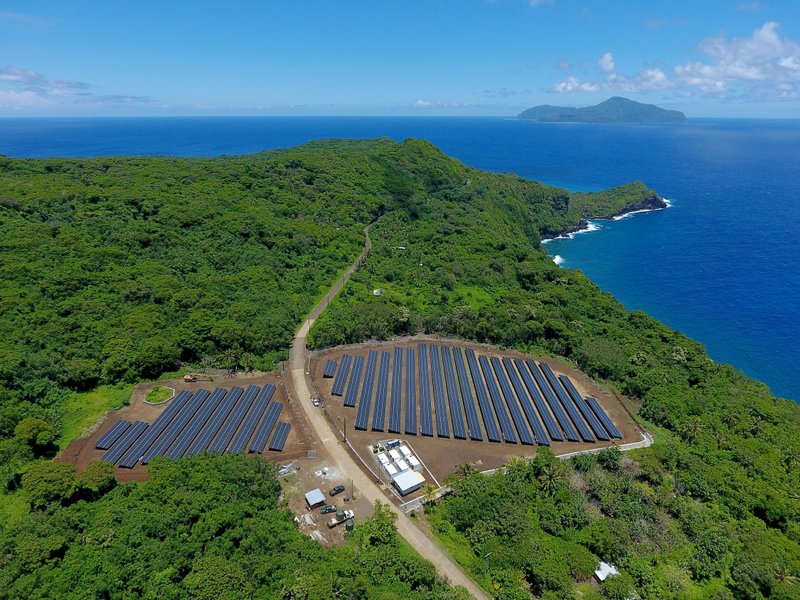A small island in American Samoa is making the switch from diesel generators to 100 percent renewable energy. Tau, the easternmost of the Samoan islands, has just been equipped with a new microgrid, with 1.4 megawatts of solar generation capacity and 6 megawatt-hours of battery storage. It's enough to power the entire island -- night and day.
With an area of just 17 square miles, Tau has a population of fewer than 1,000 people, and until now, they have relied almost entirely on diesel generators for their electricity. But because Tau is so remote, fuel for the generators must be shipped in by boat, which is expensive and means the island sometimes runs low on fuel.
About a year ago, the American Samoa Power Authority began soliciting help with a project that would save the island the inconvenience, costs and greenhouse gas emissions associated with relying on diesel.
"[They] basically just put out a solicitation to see if anybody could provide an alternative to diesel, and that's something that we responded to," said Peter Rive, co-founder and chief technology officer of solar provider SolarCity, which was recently acquired by Tesla.
The result is more than 5,000 SolarCity solar panels and 60 Tesla Powerpack battery storage systems. The new microgrid could save the island nearly 110,000 gallons of diesel fuel each year, which amounts to about 2.5 million pounds of carbon dioxide emissions, according to data from the U.S. Energy Information Administration.
The microgrid is up and operating, according to Rive, and covering about 99 percent of the island's power needs. The battery system can provide three full days of power to the island without sun, he added. It can fully recharge in seven hours of sunlight.
It's not the first time an island has made the switch to renewable energy. Last year, for instance, the Nature Conservancy completed a $1.2 million solar and wind project on Palmyra Atoll, about 1,000 miles south of Hawaii. Although there's no permanent population on the atoll, it serves as a scientific outpost and temporary residence for researchers.
SolarCity and Tesla are involved in another project on the Hawaiian island of Kauai, which will finish up with 17 megawatts of solar generation capacity and 52 megawatt-hours of battery storage, Rive said.
SundayMonday on 11/27/2016
